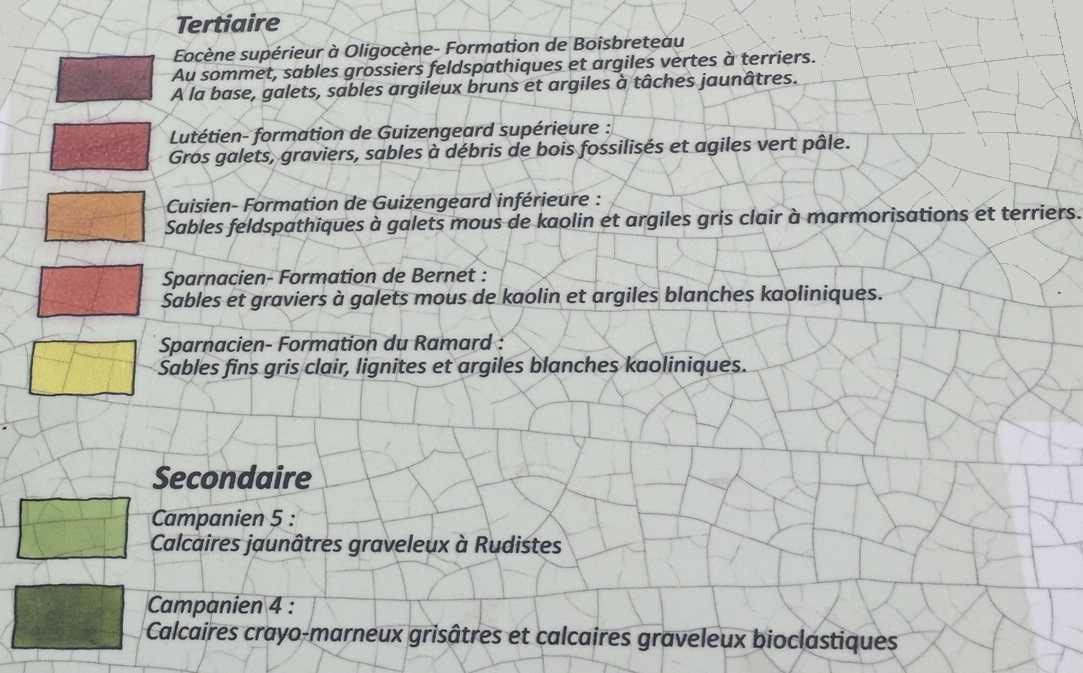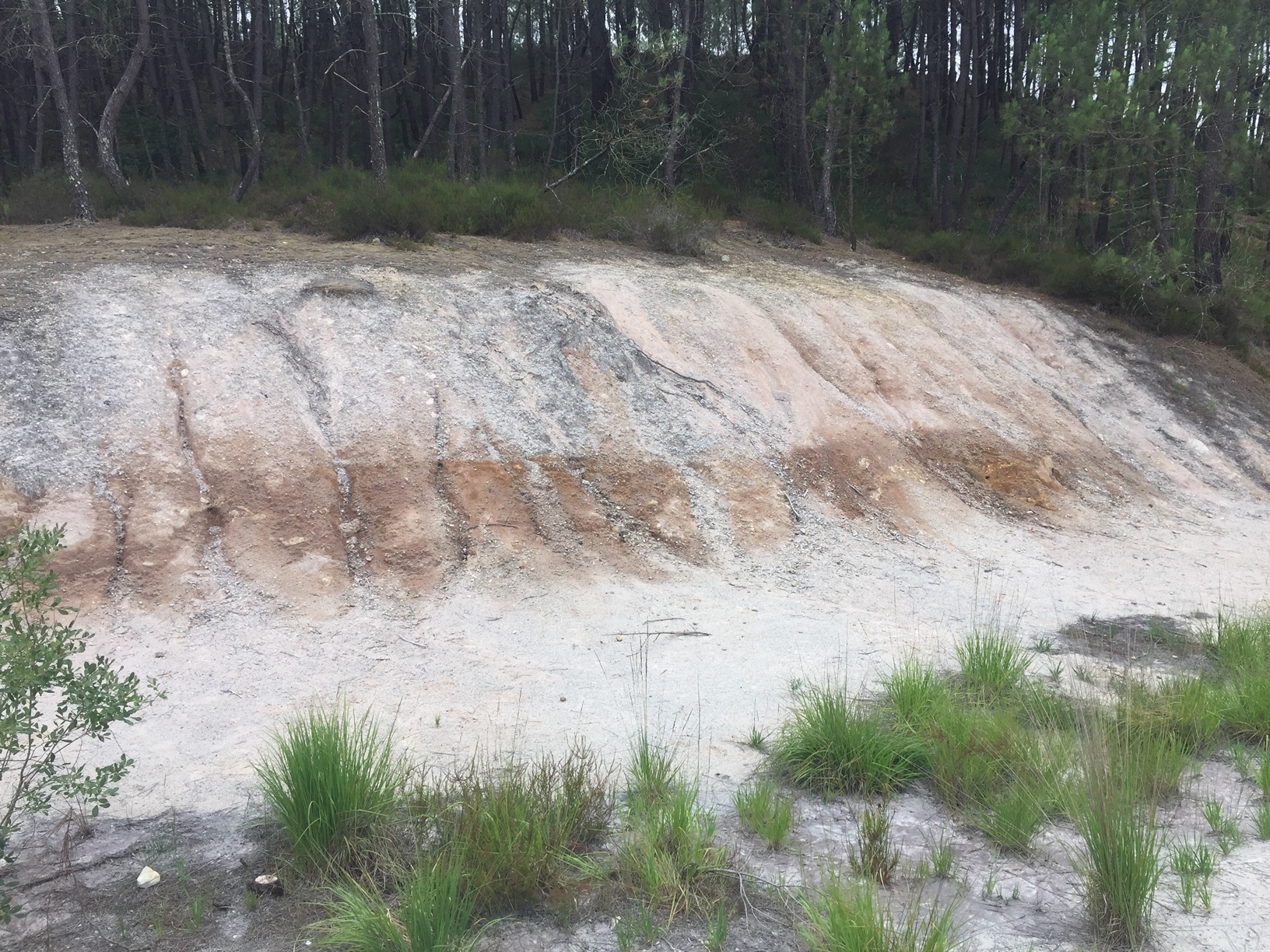Carrières de Guizengeard

À l’origine de ce paysage, l’exploitation de l’argile par l’Homme. Il faut imaginer ici des engins de chantier creusant jusqu’à 40 mètres de profondeur pour extraire et transformer le kaolin. Cette activité a considérablement bouleversé l’environnement, déplaçant des milliers de mètres cubes de matière.
Deux sentiers vous permettent de découvrir le site.
A Guizengeard, les dépôts argilo-sableux renferment des niveaux de grès siliceux.
D’origine continentale, les dépôts sablo-argileux de la région proviennent de l’érosion du Massif central. Transportés par les cours d’eau, les produits de cette érosion (graviers, sables, argiles) se sont accumulés dans une vaste dépression. Les dépôts se composent de 7 formations successives couvrant l’intervalle Paléocène supérieur-Quaternaire, soit près de 60 millions d’années. À dominante argileuse, certaines de ces formations ont été activement exploitées pour la production de kaolinite ou « argile blanche ».


L’eau des étangs, en contact avec certaines couches géologiques, est devenue acide. C’est cette caractéristique qui lui procure une couleur si surprenante, empêchant la vie aquatique de s’y développer. Avec le temps, l’évolution des sols et de la végétation lui apporteront des nuances de vert. Faune et flore se développeront pour coloniser ces espaces.

Loguez cette cache "Found it" et envoyez-moi vos propositions de réponses via mon profil ou la messagerie geocaching.com .
Je vous contacterai si problème
Voici les questions :
· Selon vous, à quelle époque du tertiaire s’est formé le site exploité ?
· Au WP1, vous trouverez une eau d’une couleur rouge-orangé. Pourquoi ? Le nom de cette rivière ?
· Au WP2, les dépôts argilo-sableux renferment des niveaux de grès siliceux. Quel est l’autre appellation de ces grès ?
· Photo optionnelle au WP de votre choix.
Rappelez-vous que c'est une earthcache,
donc il n’y a ni boîte ni logbook mais il faut répondre aux questions !
Remember that it is an earthcache, so there is no box or logbook but you have to answer the question
[ENG]
Guizengeard moors and quarries
At the origin of this landscape, the exploitation of clay by Man. You have to imagine here construction machines digging up to 40 meters deep to extract and transform kaolin. This activity has dramatically changed the environment, displacing thousands of cubic meters of material.
Two trails allow you to discover the site.
In Guizengeard, the clay-sandy deposits contain levels of siliceous sandstone.
Of continental origin, the sandy clay deposits of the region come from the erosion of the Massif Central. Transported by rivers, the products of this erosion (gravel, sand, clay) have accumulated in a vast depression. The deposits consist of 7 successive formations covering the Upper Paleocene-Quaternary interval, i.e. nearly 60 million years. Mainly clay, some of these formations have been actively exploited for the production of kaolinite or "white clay".
The water in the ponds, in contact with certain geological layers, has become acidic. It is this characteristic which gives it such a surprising color, preventing aquatic life from developing there. Over time, the evolution of the soil and vegetation will give it shades of green. Fauna and flora will develop to colonize these spaces.
Log this "Found it" cache and send me your response suggestions via my profile or geocaching.com messaging.
I will contact you if problem Here are the questions:
• According to you, at what period of the tertiary sector was the site operated?
• At WP1, you will find water of an orange-red color. Why ? The name of this river?
• In WP2, the clay-sandy deposits contain levels of siliceous sandstone. What is the other name for these sandstones?
• Optional photo at the WP of your choice.